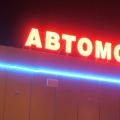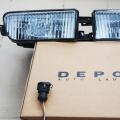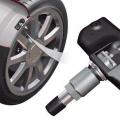Many motorists who do not just drive their vehicle, but want to get maximum comfort and safety from driving, ask themselves the question "what bulbs should be used in headlights?" The answer to this question will not be unambiguous, because today there are a fairly large number of light sources suitable for work in car headlights and foglights. The most common choice is between LED and xenon light sources.
Headlamp
Our article will tell you what to choose, xenon or LEDs. Here we will consider what are the advantages of those and other lamps, as well as their disadvantages when installed in headlights.
Two leaders
Modern lighting technology has made its way to automobiles as well. Today, halogen light sources are less and less installed in headlights. Instead, the alternative to car lighting (fog lights, low beam, etc.) is increasingly leaning towards xenon or LED bulbs. LED or xenon lamps, in comparison with obsolete halogen light sources, have recently become found in the prevailing majority of car brands.

Car with xenon headlights
It should be noted, however, that the halogen lamps were initially replaced by xenon light sources. But today they have a great alternative in the form of LED bulbs.
Note! If xenon lamps began to be used instead of halogen light sources for a long time, then LEDs in this area began to compete relatively recently.
But which is still better - xenon or LEDs? To answer this question, you must first consider the principle of operation of a car headlight, which contains fog and low beam.
Functional principle of halogen backlight
Car headlights are a very important part of the lighting system. To better understand how a headlight works, consider this process using the example of halogen bulbs.
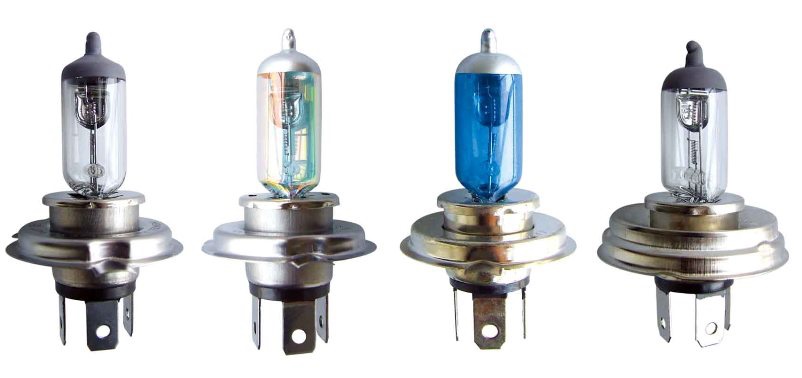
Halogen bulbs for car
Halogen lamps are light sources that look like a glass bulb. Inside such a bulb there are electrodes with a tungsten filament stretched between them. Some models contain an inert gas inside the bulb. These are more advanced products. A mixture of these gases is called halogen.
Note! Halogen bulbs are a more advanced incandescent bulb.
Such lamps, when installed in car headlights, give a fairly good level of luminous flux. The glow here occurs due to the passage of current through the tungsten filament. But such light sources are not the most optimal today, which is why they are being replaced by modern lamps (LED or xenon). It is a good alternative to outdated light bulbs that cannot compete with modern light sources.
At its core, car headlights (foglights, low beam mode) can turn on any light source. Let's consider each option in more detail.
Xenon light sources
Xenon lamps are light sources operating on the principle of "ignition" of a special gas in an electric arc. Often, a monoatomic gas that does not have an odor and color - xenon is used in its role. Therefore, such lamps are called "xenon".
Note! Xenon is characterized by the formation of a very bright electric arc, which has a positive effect on the luminous flux it creates.
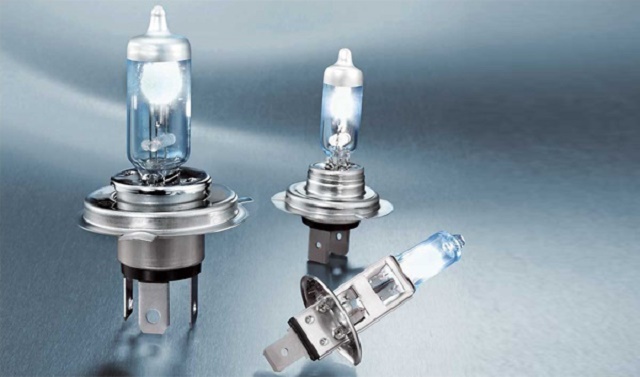
Xenon lamp for car
Xenon bulbs, which are used in place of halogen light sources, are a closed bulb. Only one gas has been pumped into it. In this case, there are two electrodes in the flask. It is between them that an electric arc arises. To get it, you need to create a high voltage of 25,000 volts. Therefore, “ignition blocks” are used here.
Such lamps shine better than halogen models, about two, or even three to four times. For example, an ordinary halogen bulb in a headlight (fog or low beam) creates a luminous flux of 1500 Lm, and a xenon one - up to 6000 Lm. As you can see, the difference is obvious. Therefore, this alternative is very relevant for car headlights.
Advantages and disadvantages of xenon
Today, xenon light sources for car headlights are used most often, instead of halogen models, due to their many advantages:
- powerful and bright luminous flux. It illuminates the road much better if such lamps are installed in the headlights;
- excellent fog light. He is able to break through "slush" and fog. As a result, xenon fog lights will be safer for cars, as well as give a better view in difficult weather conditions;
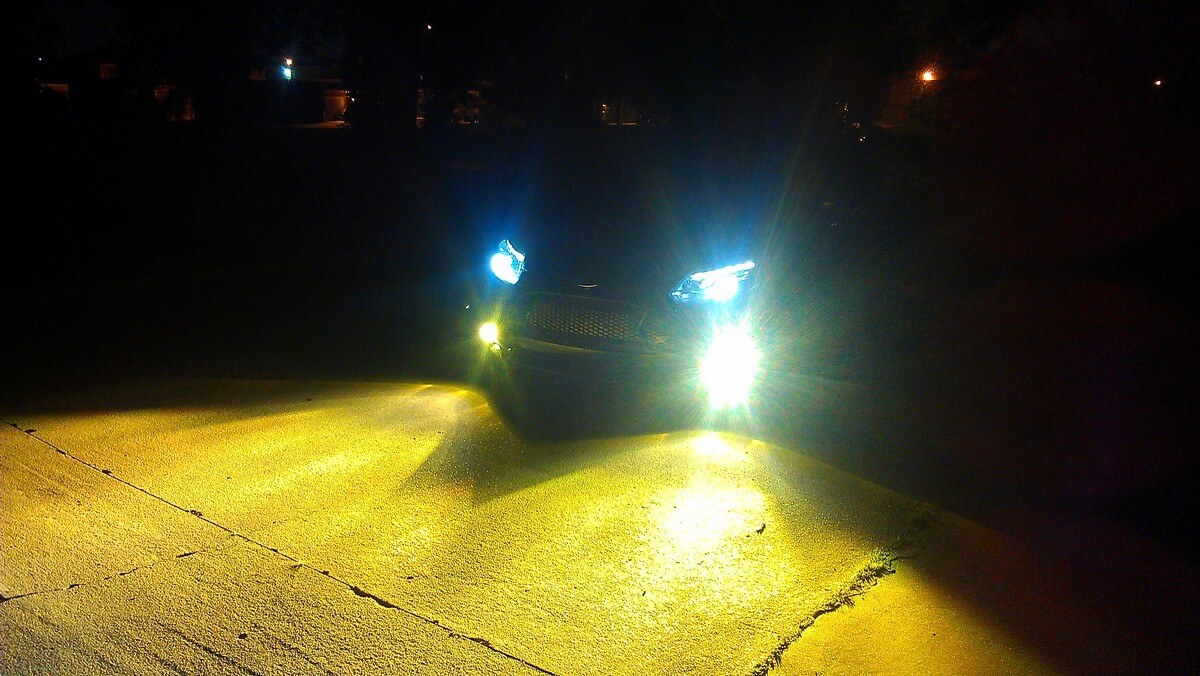
Fog headlights
- durable product. Xenon bulbs can last much longer than halogen bulbs. Such a durable alternative will save money on purchasing a light source;
Note! Xenon models will last 2000 - 2500 hours, instead of 150 - 600 hours for halogen models.
- xenon is not afraid of shock and shock. When driving every day for 2-3 hours, it will last about 4 years;
- there is a lower temperature here. This means that the heating of the product with xenon gas inside will be much less noticeable than that of halogen ones. Here, only 7% of the energy is converted into heat, while for halogen ones - 40%.
As you can see, xenon products will be better than their counterparts. But not everything is so smooth, because such an alternative is not without its drawbacks. The disadvantages of such light sources include the following points:
- not all xenon is allowed for installation in car headlights. For example, on the territory of the Russian Federation, it is allowed to use only the xenon that is installed regularly at the manufacturer's factories;
Note! The presence of a "handicraft" Chinese analogue in your headlamp can lead to a fine, or even disqualification for a period of six months or a year.
- complex equipment. To use xenon light sources in the lighting of a car, it is necessary to install rather sophisticated equipment in it;

Xenon equipment
- a high voltage is required to ignite the lamp. Therefore, an “ignition unit” is required here;
- slightly increased consumption. With such a backlight, there is a heavy load on the vehicle's generator. Therefore, fuel consumption will increase. Although the consumption will increase insignificantly, it still cannot be called a plus;
- expensive equipment;
- the need to think over the angle of inclination of the headlights due to the high power of the lighting system;
- difficulties in combining high and low beam in the design of one headlight.
As you can see, the list of disadvantages of xenon bulbs is comparable to their advantages. Now let's consider the installation option instead of LED halogen light sources. This alternative is quite common today.
LED car lighting

LED headlight bulb
LED light sources are a completely new and different backlight technology with advantages such as durability and economy.
The basis of LED lighting models is an LED - a semiconductor that is capable of converting electric current into a glow.
Note! LEDs have their own "minus" and "plus". If you mix up the terminals, then there will be no glow.
This semiconductor consists of a crystalline element placed on a non-conductive substrate and a housing with contacts. The inner space between the lens and the crystal is filled with a special silicone compound.
As you can see, there are also no filaments here, so the led is not afraid of bumps and jolts on uneven roads. But here it is necessary to remember that, if used improperly, the crystal can very quickly begin to degrade, which will lead to the failure of the product.
It should be noted that the third generation LEDs have already been released. This technology is developing and improving rather quickly, giving the world more and more perfect light sources every time. Indeed, with each generation, strength, reliability, resistance to adverse environmental factors and luminous flux increase. For example, the first generation LEDs could not compete even with halogen bulbs. Their luminous flux was about 500 - 600 Lm. But today there are third-generation products for which 4000 Lm is not the limit.
Pros and cons of LED models
Today, LED lighting is a great alternative to many others. Led are in demand due to the following advantages:
- low power consumption. A minimum of electricity is consumed here;
- fuel savings due to low energy consumption;
- the special driver needed to install the led can be easily hidden behind the rubber cover of the headlight;
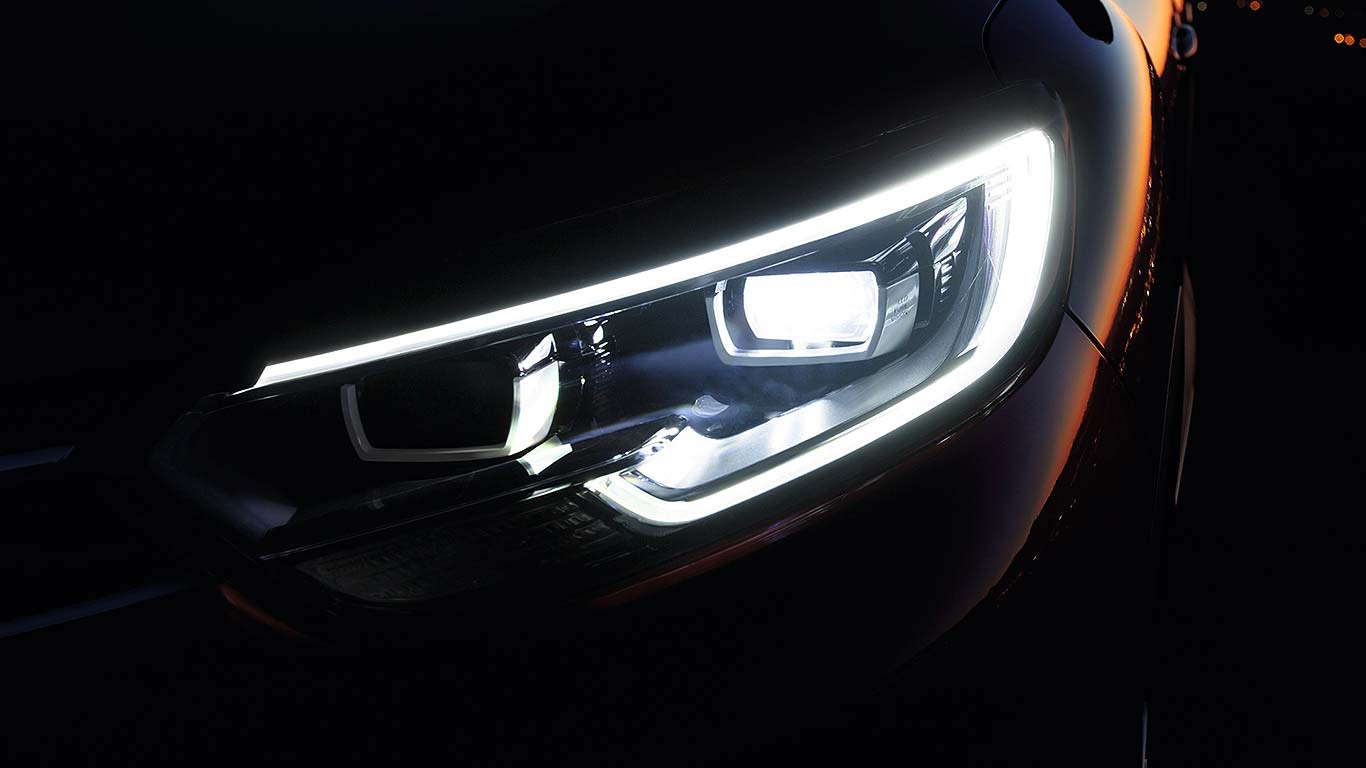
LED headlight
- sufficiently bright and powerful luminous flux (applies to third-generation LEDs);
- any led modifications are not prohibited by law, unlike the same xenon bulbs;
- the ability to make headlights of any color;
- The led headlight shines brightly, but does not dazzle. And this is especially true for automotive lighting. LED light illuminates very well in slush and fog;
- availability of various shapes and sizes of led products;
- led costs the same as xenon models.
But the disadvantages here include:
- the possibility of strong heating due to the large flow of energy;
- voltage surges are possible;
- the work of the drivers is not very long;
- the brightness of the LEDs is lower than that of xenon lamps.
This is not to say that LED bulbs are better than xenon bulbs in all respects. Therefore, the choice here is quite difficult. Today we can say that these are generally equivalent light sources.
Conclusion
When choosing between LEDs and xenon bulbs as a light source for car headlights, it is necessary to compare the contenders for their pros and cons. Both options have both obvious disadvantages and advantages. But many people today prefer LED products because of their economy and lack of modification problems.
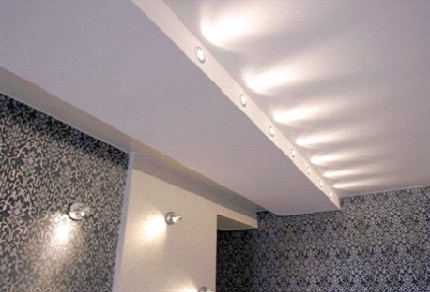 Secrets of installing spotlights in a stretch ceiling: how difficult is it?
Secrets of installing spotlights in a stretch ceiling: how difficult is it?

